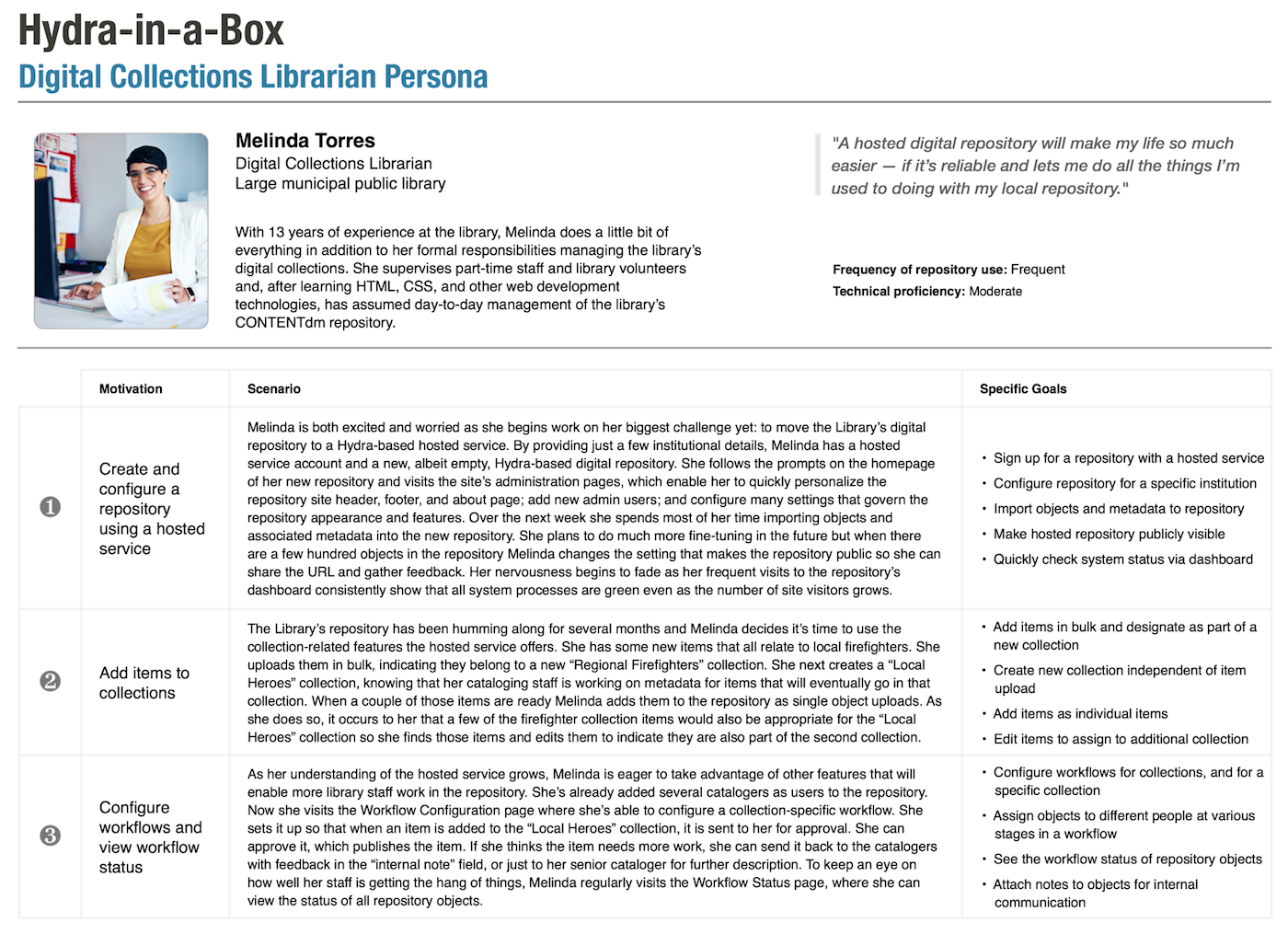Fourth in a series of blog posts highlighting the personas produced in our design process, each representing a typical user of Hydra-in-a-Box and embodying a number of use cases that our repository product, now in development, or our hosted service, now in planning, aim to fulfill.
Meet Melinda Torres, Digital Collections Librarian at a large municipal public library. Her story surfaces three key advances in the Hydra-in-a-Box project that fill notable gaps in the overall Samvera landscape.

Melinda is using one of the most exciting outcomes of the Hydra-in-a-Box project: the hosted repository service. Many institutions depend on hosted services to fill gaps in local infrastructure or staffing, enabling the institution to support core functions and operations, such as a digital repository, without a major investment or restructuring of resources. The Hydra-in-a-Box hosted service is positioned to be an attractive new option – supporting a broad range of use cases and content types, as represented in the six design personas – for those starting up their first repository and for those looking to migrate from existing systems.
In Melinda’s work with the repository, we see how she takes advantage of the flexible collection functionality available in the Hydra-in-a-Box repository. We are currently extending the initial code base with the ability to name and manage an “administrative set”, a term which essentially means “collection” as commonly used in libraries and archives. An administrative set is a group of works that share some common attributes and are therefore most efficiently managed together: the works may come from a common source, may be governed by the same terms of deposit and access, and are often best suited for discovery as a group in its own right. Some examples of an administrative set include a collection of master’s theses deposited by students in an academic department or a set of photographs donated to a museum by an art collector. The Hydra-in-a-Box repository will have interfaces and roles that support the use of these kinds of “collections”. (See our poster on administrative sets presented at Hydra Connect 2016 in Boston earlier this year.) The project is also looking to develop additional functionality to support curated sets of works, perhaps drawing from different administrative sets, that would be useful for creating exhibits or other ad hoc groupings of content.
Finally, we see the mediated deposit workflow in action. This workflow, heretofore not part of the core functionality in the main Samvera gems, is critically important to many repository deposit scenarios, both in the institutional repository context and for library and archives collections, because it allows deposited content to be processed (reviewed, augmented, and vetted, etc.) by one or more staff through a series of one or more steps before being fully ingested into the system. The Hydra-in-a-Box development team has been contributing requirements and overall guidance to the mediated deposit workflow sprint led by Oregon State University this fall. The work that this group has been developing in the Sufia and Curation Concerns gems will be available in the first release of the Hydra-in-a-Box repository. For some insight on the progress made by the OSU-led team, watch this demo video.
Next up in the blog series, we will explore how Hydra-in-a-Box makes the life of a Metadata Specialist easier. (You can download all six of the Hydra-in-a-Box personas and other project design documents from the DuraSpace wiki.)